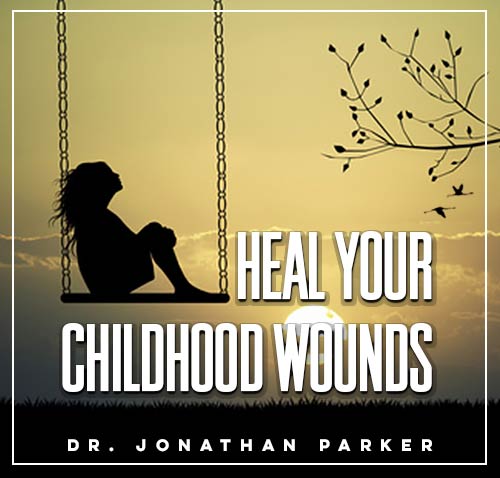Childhood Emotional Healing: Embrace Self-Acceptance

Hey there, amazing readers! 🖐️ Just a quick note: yes, we know there are a lot of ads here. Trust us, we get it—it’s not the prettiest look, but they help us keep this blog alive and kicking. Those pesky little ads cover the costs of all the behind-the-scenes magic, from hosting and tech stuff to creating content we hope you’ll love.
We’re committed to delivering quality posts, and your support (even just sticking around despite the ads) means everything to us. So, bear with us, and thanks for helping us keep the good vibes rolling. Now, on to the fun stuff! 😉
TRANSLATE BUTTON AT THE END OF THE ARTICLE
A Quick Overview
Childhood emotional healing is a crucial process that involves addressing past traumas, wounds, and negative experiences from one’s early years.
This healing journey is essential for individuals to overcome emotional pain, develop self-awareness, and cultivate a sense of self-acceptance and self-love.
Embracing self-acceptance is a key component of this healing process, as it allows individuals to acknowledge and validate their emotions, experiences, and inner struggles without judgment or criticism.
By learning to accept and love oneself unconditionally, individuals can heal from past wounds and develop a healthier relationship with themselves and others.
Understanding Childhood Emotional Healing
Childhood emotional healing refers to the process of addressing and resolving emotional wounds, traumas, and negative experiences from one’s early years.
These experiences can include childhood abuse, neglect, abandonment, bullying, or any other form of emotional harm that may have occurred during childhood.
The process of healing involves acknowledging and processing these past experiences, understanding their impact on one’s emotional well-being, and working towards healing and self-acceptance.
Importance of Self-Acceptance in Healing
Self-acceptance plays a crucial role in the process of childhood emotional healing.
It involves acknowledging and accepting all aspects of oneself, including the past wounds, flaws, imperfections, and vulnerabilities.
By embracing self-acceptance, individuals can let go of self-criticism, shame, and self-judgment, and instead cultivate a sense of self-compassion, self-love, and self-empowerment.
Self-acceptance allows individuals to heal from past traumas and wounds, build resilience, and develop a healthier relationship with themselves and others.
Building a Foundation of Self-Love
Building a foundation of self-love is essential for childhood emotional healing.
Self-love involves caring for oneself, prioritizing one’s needs and well-being, and treating oneself with kindness, compassion, and respect.
By practicing self-love, individuals can develop a positive self-image, boost their self-esteem, and nurture a sense of inner peace and contentment.
Building a foundation of self-love is a powerful way to support one’s healing journey and cultivate a deep sense of self-acceptance and self-compassion.
Addressing Past Trauma and Wounds
Addressing past trauma and wounds is a critical step in the process of childhood emotional healing.
This involves acknowledging and processing the emotional pain, hurt, and suffering that may have been experienced during childhood.
It also involves exploring the impact of these past traumas on one’s beliefs, behaviors, and emotions, and working towards healing and resolution.
By addressing past trauma and wounds, individuals can begin to release emotional baggage, let go of negative patterns, and create space for healing, growth, and transformation.
Cultivating Compassion for Oneself
Cultivating compassion for oneself is an important aspect of childhood emotional healing.
Self-compassion involves treating oneself with kindness, care, and understanding, especially during times of emotional distress or turmoil.
By cultivating self-compassion, individuals can learn to soothe their own pain, comfort themselves in times of need, and offer themselves the same level of empathy and support they would give to a loved one.
Cultivating compassion for oneself is a powerful way to nurture self-acceptance, self-love, and emotional healing.
Techniques for Healing Emotional Pain
There are various techniques that can be helpful in healing emotional pain from childhood experiences.
Some effective techniques include:
Journaling: Writing down thoughts, feelings, and memories can help individuals process and release emotional pain.
Therapeutic techniques: Seeking therapy, such as cognitive-behavioral therapy or EMDR, can help individuals work through past traumas and wounds.
Mindfulness practices: Engaging in mindfulness meditation, yoga, or deep breathing exercises can help individuals stay present and calm during emotional distress.
Creative activities: Engaging in creative outlets, such as art, music, or dance, can help individuals express and release pent-up emotions in a healthy way.
Embracing Vulnerability and Authenticity
Embracing vulnerability and authenticity is a key aspect of childhood emotional healing.
It involves being open and honest about one’s emotions, experiences, and struggles, without fear of judgment or rejection.
By embracing vulnerability, individuals can connect with their true selves, express their feelings authentically, and build deeper, more meaningful relationships with others.
Embracing vulnerability and authenticity is a powerful way to foster self-acceptance, self-expression, and emotional healing.
Letting Go of Shame and Guilt
Letting go of shame and guilt is essential for childhood emotional healing.
Shame and guilt are common emotions that can stem from past traumas, wounds, or negative experiences from childhood.
By letting go of shame and guilt, individuals can release self-blame, self-criticism, and self-judgment, and instead cultivate self-compassion, self-forgiveness, and self-empowerment.
Letting go of shame and guilt is a liberating and transformative process that allows individuals to heal from past wounds and embrace self-acceptance and self-love.
Practicing Mindfulness and Meditation
Practicing mindfulness and meditation is a powerful way to support childhood emotional healing.
Mindfulness involves being present in the moment, without judgment or attachment to past or future thoughts.
Meditation involves focusing on the breath, body sensations, or a specific mantra to cultivate inner peace, clarity, and calm.
By practicing mindfulness and meditation, individuals can develop self-awareness, emotional regulation, and resilience, and create a space for healing, growth, and transformation.
Seeking Support from Therapists or Counselors
Seeking support from therapists or counselors is important for individuals who are on a journey of childhood emotional healing.
Therapists and counselors can provide a safe, nonjudgmental space for individuals to explore and process past traumas, wounds, and emotional pain.
They can offer guidance, support, and therapeutic techniques to help individuals heal, grow, and transform.
Seeking support from therapists or counselors can be a valuable resource for individuals seeking to deepen their self-acceptance, self-love, and emotional healing.
Nurturing Inner Child Through Self-Care
Nurturing the inner child through self-care is a vital aspect of childhood emotional healing.
The inner child represents the wounded, vulnerable part of oneself that may have experienced pain, neglect, or trauma during childhood.
By nurturing the inner child through self-care practices, such as self-compassion, self-soothing, and self-nurturing activities, individuals can heal past wounds, build resilience, and cultivate a sense of self-acceptance and self-love.
Nurturing the inner child through self-care is a powerful way to support emotional healing, growth, and transformation.
Celebrating Progress and Growth in Healing
Celebrating progress and growth in healing is an important part of the journey of childhood emotional healing.
It’s essential for individuals to acknowledge their accomplishments, milestones, and breakthroughs along the way.
By celebrating progress and growth, individuals can boost their self-esteem, reinforce positive changes, and cultivate a sense of pride, gratitude, and self-empowerment.
Celebrating progress and growth in healing is a way to honor one’s resilience, courage, and commitment to self-acceptance and self-love.
Conclusion
Childhood emotional healing is a transformative journey that involves addressing past traumas, wounds, and negative experiences from one’s early years.
Embracing self-acceptance is a key component of this healing process, as it allows individuals to acknowledge, validate, and heal from emotional pain and past wounds.
By building a foundation of self-love, addressing past trauma, cultivating compassion for oneself, and practicing mindfulness and meditation, individuals can support their journey of emotional healing and self-acceptance.
Seeking support from therapists or counselors, nurturing the inner child through self-care, and celebrating progress and growth in healing are essential steps towards cultivating a healthier relationship with oneself and others.
Through self-acceptance and self-love, individuals can heal from childhood emotional wounds, develop resilience, and embrace a sense of inner peace and well-being.

The Enlightenment Journey is a remarkable collection of writings authored by a distinguished group of experts in the fields of spirituality, new age, and esoteric knowledge.
This anthology features a diverse assembly of well-experienced authors who bring their profound insights and credible perspectives to the forefront.
Each contributor possesses a wealth of knowledge and wisdom, making them authorities in their respective domains.
Together, they offer readers a transformative journey into the realms of spiritual growth, self-discovery, and esoteric enlightenment.
The Enlightenment Journey is a testament to the collective expertise of these luminaries, providing readers with a rich tapestry of ideas and information to illuminate their spiritual path.
Our Diverse Expertise 🌟
While our primary focus is on spirituality and esotericism, we are equally passionate about exploring a wide range of other topics and niches 🌍📚. Our experienced team is dedicated to delivering high-quality, informative content across various subjects ✨.
To ensure we provide the most accurate and valuable insights, we collaborate with trusted experts in their respective domains 🧑🏫👩🏫. This allows us to offer well-rounded perspectives and knowledge to our readers.
Our blog originally focused on spirituality and metaphysics, but we’ve since expanded to cover a wide range of niches. Don’t worry—we continue to publish a lot of articles on spirituality! Frequently visit our blog to explore our diverse content and stay tuned for more insightful reads.







